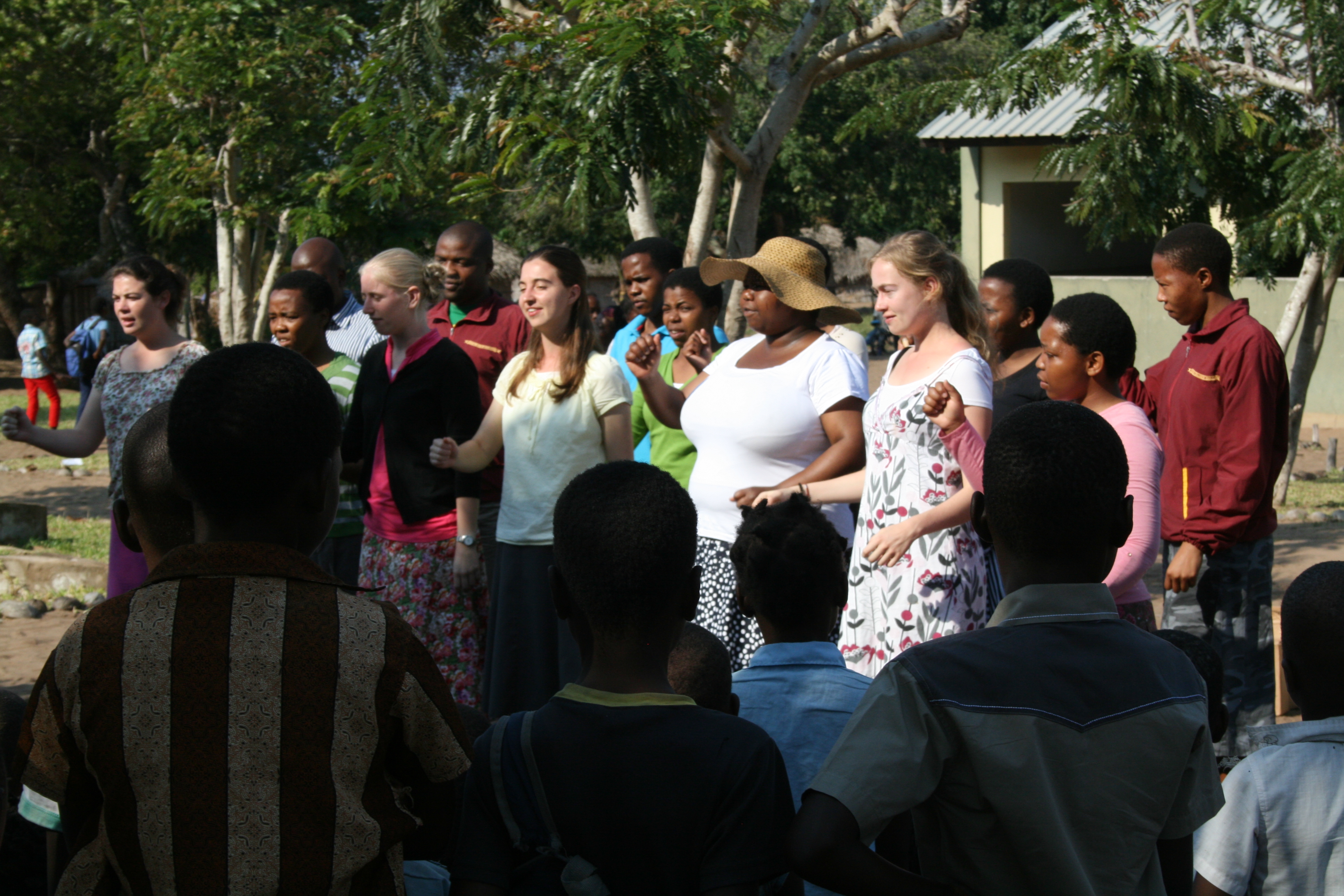Our legal corner
 Since our last DFL newsletter and following our successful challenge in both the High Court and Supreme Court of Appeal to have the licence for broadcasting 3 pornographic TV channels granted by ICASA reviewed [and effectively withdrawn until (and if) a new licence be successfully applied for], there are the following developments :
Since our last DFL newsletter and following our successful challenge in both the High Court and Supreme Court of Appeal to have the licence for broadcasting 3 pornographic TV channels granted by ICASA reviewed [and effectively withdrawn until (and if) a new licence be successfully applied for], there are the following developments :
- The Euthenasia-case (Dignity SA on behalf of Stansham-Ford) As we all know from the extensive media coverage this case enjoyed, the Applicant is boasting its success in their High Court application. The judgment has such ramifications for our law [South African common law on this subject that was over-ruled by Justice Fabricius], that he has granted leave to appeal his decision in the Constitutional Court. DFL was one of the parties who had opposed the Application to make assisted suicide legal. The State has indicated its intention to appeal the decision in the Constitutional court. DFL will continue to be involved in the appeal proceedings as Amicus Curiae. It is important that this judgment be successfully appealed, as the judge’s decision opens a whole can of worms, especially in medical ethics, that it cannot go un-challenged.
- The Dagga-case (Stobbs & Clarke /NDPP & Others) In this matter DFL has the supportive role as Amicus Curiae in opposing an application to have marijuana legalised for medical purposes. DFL is acutely aware that the driving force behind the court application is an agenda to ultimately have dagga legalised for street use. The difference in this case and the previous dagga-case which DFL successfully opposed, is that in the previous case the applicant tried to have the legitimacy of the criminal sanction of using dagga privately overturned. In this present case before court, the applicants want it ruled that use of hashish as a relief medication, especially in the treatment of cancer, be allowed. The problem DFL is currently facing is the slow pace at which the State Attorney, who represents the National Director of Public Prosecutions, functions. We thus failed to set up a meeting with the State Attorney in 2014 in time for the trial which was set down for March 2015. The meeting was to strategise on procedure and meet with the opposition at the obligatory pre-trail meeting. The Applicants consequently had the case postponed to March 2016. This could have had the dire consequence for our cause had Parliament, in its 2015 session, tabled legislation, in which case our opposing the court action would have been futile. As it turns out, no legislation was tabled as the CDA (Central Drug Authority), after addressing parliament, caused the proposed legislation to be referred back to the relevant portfolio committee, after they recommended that much more research is required before dagga can be considered safe for medicinal use. This gives DFL an ideal opportunity to put before the court convincing evidence to reject the currant court application. We are trying hard to have the necessary meeting between us, the State Attorney and the legal team of the Applicants set up for September 2015. Please pray that this time it will work out for us, paving the way to successfully oppose the court application.
S J M Schneider – member of the legal team
The Ethical dilemma
 Moral conflicts usually have two sides. It is not always easy to figure out how to handle situations like these. Some people look at the options themselves while others prefer to look at the consequences before making a decision. Some people are led by religious convictions (Moral absolutism – some things are either right or wrong) while others prefer to look at the more humane options and consider the people involved. Some people go for the lesser of two evils while others prefer to see it as the better of two good things. There are also laws involved that make these decisions even more complicated. Whatever way we look at it, it remains a complex situation and there is nearly always mental conflict involved.
Consider the following options:
Moral conflicts usually have two sides. It is not always easy to figure out how to handle situations like these. Some people look at the options themselves while others prefer to look at the consequences before making a decision. Some people are led by religious convictions (Moral absolutism – some things are either right or wrong) while others prefer to look at the more humane options and consider the people involved. Some people go for the lesser of two evils while others prefer to see it as the better of two good things. There are also laws involved that make these decisions even more complicated. Whatever way we look at it, it remains a complex situation and there is nearly always mental conflict involved.
Consider the following options:
- To stop or continue treatment in a terminally ill patient
- To switch off machines or not in a terminally ill patient
- To attempt resuscitation or not in a seemingly hopeless case
- To perform an abortion in very specific situations (Severe mental and physical disability) even if it is against your conscious
- To prescribe a placebo if the patient insist on treatment
- To hide information from a patient to boost his/her spirit
- To knowingly hide your mistakes for fear of the consequences
- There are many other examples that could be mentioned
A personal testimony
 I was an A grade student, never did drugs or went to parties, just went to
church and to school. I always remember getting involved in a lot of fights at
school and being very violent. I was a loner, not having a set circle of friends.
My teachers could never understand how I could be a good student, academically,
but at the same time be so rebellious.
When I was 18 I joined “Serve Team”. This is where you dedicate a year of your life to work full time in the church and get involved with community programs etc. While doing this I decided to go to Bible college and become a pastor. This never happened. I started working, moved out of my parent’s place and stopped going to bible college. Still went to church but had no relationship with God.
I have always loved music, I started playing guitar when I was 6. By the time I was 18 I could play drums, bass guitar and guitar. I wrote worship music and was in a Christian band. I had never smoked cigarettes, never been clubbing, never drank alcohol. Didn’t even know what drugs are. This all changed very quickly though. I was invited by some friends to go down to Durban to a club called 330’s. It was a dance club, when “Rave Music” first came out in SA and started becoming popular. I hated dance music. Being a live musician I thought Dj’s were fake. I decided to go anyway. I remember getting to the club and didn’t like the music nor could I understand why everyone was wearing sunglasses in a club at night, chewing gum and sucking lollipops etc.
I wasn’t having fun, not evening drinking, I didn’t do that kind of thing. A girl came up to me and asked me why I was so miserable, so I told her I don’t like this music and have never been to a club before. She said that she was going to change the way I see the world and I would be really alive for the first time. She then put a small pill in my mouth, gave me some water and I drank it. She said it would make me feel better. That pill was “ecstasy”. The first drug I ever took. After that night everything changed, I was hooked. It wasn’t long and I was drinking alcohol, smoking cigarettes and marijuana. I started doing cocaine, a bit of heroine every now and then. Then came acid, “LSD 25”, crystal meth, “Ice”, speed, “Ephedrine”, kat, “Ketamine”, GHB, “liquid ecstasy”, Mdma and more.
I wasn’t your average addict, I worked and only did drugs on weekends. Went to gym, played club rugby and cricket and thought I was in control. I got to know a lot of drug dealers and I was very attracted to their way of life. The money, the girls, the parties and the drugs. I stopped playing live music and became a club dj. I became a drug dealer and was involved with dealing drugs for about 8 years. I used to make on average around R80 000 a week. So I needed nothing, I had everything. Cars, motorbikes, a house, girls, I went to all the top parties and played at all the best clubs in SA for many years.
What my friends didn’t know was that when I was alone I was not happy, I felt like there was something missing. I couldn’t sleep, I used to have nightmares, no matter how much I tried I couldn’t fill this hole that was inside me. I started smoking crack, cocaine and “rocks”. I used to smoke 7 days a week and spend about R7000 a day on my habit. I have done some very bad things, been to some very dark places in my life and could tell you a million stories from those days but I believe that all of those things are not what should be focused on. Yes, they happened but where I am now, is far more important.
I arrived at Kwasizabantu Mission on 31 December 2014 at 17:30pm a broken person with nothing. I just knew that I wanted God to be in control of my life and that I wanted to do His will for my life and not my will. As time went on I felt God calling me to work full time for Him. I felt a burden for all the lost souls out there and thought that becoming a missionary and spreading God’s word to those people that need to hear it the most is the most important thing anyone could be called to do.
I had a meeting with Dr. Albu van Eeden, our CEO, to speak with him about working for Doctors For Life International. I didn’t know exactly at the time how I was going to be of any help at DFL but I trusted God to know what was best for me. After he spoke with me he offered me the opportunity to become a part of DFL and I said gladly, especially after hearing about what it is that DFL does. Vaughan Luck
I was an A grade student, never did drugs or went to parties, just went to
church and to school. I always remember getting involved in a lot of fights at
school and being very violent. I was a loner, not having a set circle of friends.
My teachers could never understand how I could be a good student, academically,
but at the same time be so rebellious.
When I was 18 I joined “Serve Team”. This is where you dedicate a year of your life to work full time in the church and get involved with community programs etc. While doing this I decided to go to Bible college and become a pastor. This never happened. I started working, moved out of my parent’s place and stopped going to bible college. Still went to church but had no relationship with God.
I have always loved music, I started playing guitar when I was 6. By the time I was 18 I could play drums, bass guitar and guitar. I wrote worship music and was in a Christian band. I had never smoked cigarettes, never been clubbing, never drank alcohol. Didn’t even know what drugs are. This all changed very quickly though. I was invited by some friends to go down to Durban to a club called 330’s. It was a dance club, when “Rave Music” first came out in SA and started becoming popular. I hated dance music. Being a live musician I thought Dj’s were fake. I decided to go anyway. I remember getting to the club and didn’t like the music nor could I understand why everyone was wearing sunglasses in a club at night, chewing gum and sucking lollipops etc.
I wasn’t having fun, not evening drinking, I didn’t do that kind of thing. A girl came up to me and asked me why I was so miserable, so I told her I don’t like this music and have never been to a club before. She said that she was going to change the way I see the world and I would be really alive for the first time. She then put a small pill in my mouth, gave me some water and I drank it. She said it would make me feel better. That pill was “ecstasy”. The first drug I ever took. After that night everything changed, I was hooked. It wasn’t long and I was drinking alcohol, smoking cigarettes and marijuana. I started doing cocaine, a bit of heroine every now and then. Then came acid, “LSD 25”, crystal meth, “Ice”, speed, “Ephedrine”, kat, “Ketamine”, GHB, “liquid ecstasy”, Mdma and more.
I wasn’t your average addict, I worked and only did drugs on weekends. Went to gym, played club rugby and cricket and thought I was in control. I got to know a lot of drug dealers and I was very attracted to their way of life. The money, the girls, the parties and the drugs. I stopped playing live music and became a club dj. I became a drug dealer and was involved with dealing drugs for about 8 years. I used to make on average around R80 000 a week. So I needed nothing, I had everything. Cars, motorbikes, a house, girls, I went to all the top parties and played at all the best clubs in SA for many years.
What my friends didn’t know was that when I was alone I was not happy, I felt like there was something missing. I couldn’t sleep, I used to have nightmares, no matter how much I tried I couldn’t fill this hole that was inside me. I started smoking crack, cocaine and “rocks”. I used to smoke 7 days a week and spend about R7000 a day on my habit. I have done some very bad things, been to some very dark places in my life and could tell you a million stories from those days but I believe that all of those things are not what should be focused on. Yes, they happened but where I am now, is far more important.
I arrived at Kwasizabantu Mission on 31 December 2014 at 17:30pm a broken person with nothing. I just knew that I wanted God to be in control of my life and that I wanted to do His will for my life and not my will. As time went on I felt God calling me to work full time for Him. I felt a burden for all the lost souls out there and thought that becoming a missionary and spreading God’s word to those people that need to hear it the most is the most important thing anyone could be called to do.
I had a meeting with Dr. Albu van Eeden, our CEO, to speak with him about working for Doctors For Life International. I didn’t know exactly at the time how I was going to be of any help at DFL but I trusted God to know what was best for me. After he spoke with me he offered me the opportunity to become a part of DFL and I said gladly, especially after hearing about what it is that DFL does. Vaughan Luck
For a more complete version of this testimony you may contact Vaughan at [email protected]
LifeChild update
We are so grateful for the new developments at our center. It would not have been possible without the support of our donors. We were able to tile the whole orphanage, renew the bathrooms and paint. Please see the attached pictures below.


Aid to Africa (A2A) Outreaches 2015
During July 2015 DFL undertook a medical outreach to the southern parts of Malawi (Namandanje and Mauzi). In many ways it was a blessed outreach. Not only was the eyesight of many people restored but they also received spiritual light and their eyes were open to the Gospel of our Lord Jesus Christ. In all we did 90 cataract operations, handed out 582 reading glasses and 90 dark glasses for patients after surgery. One man was blind for 30 years and after surgery could see again. It must have been quite a “Rip van Winkel” experience for him. At first he was completely disorientated but after a while it became a reality and a joy for him. We thank God with him for his eyesight. We were also fortunate to have a dentist with us. She extracted 600 teeth during the two weeks. The Malawi people are a friendly and peaceful people. They treated us very well and were more than willing to share the little they have with us. They were really thankful for what we did for them and pleaded for more Bibles should we visit them again.




 A personal experience during the outreach
A personal experience during the outreach
The first thing that struck me in Malawi, was the sea of little faces we saw wherever we went. I have never before seen so many children per square kilometre. They would run out of their homesteads to greet us, follow us or stare at us. Most were between the ages of 3 – 14. They were friendly and communicative, so I invited them and with the help of a translator, told them Bible stories. They listened intently and the Moslem children were particularly responsive.
The total population of Malawi is approximately 12 million, of which 5 571,226 are children between the ages of 0 – 14, i.e. 47{01b0879e117dd7326006b2e84bcaac7e8fa1509c5c67baf2c9eb498fe06caff4} and 937,000 are orphans i.e. nearly 18{01b0879e117dd7326006b2e84bcaac7e8fa1509c5c67baf2c9eb498fe06caff4} of all children, 59 {01b0879e117dd7326006b2e84bcaac7e8fa1509c5c67baf2c9eb498fe06caff4} of them are orphaned because of AIDS. We saw evidence of this when the director of an orphanage of 500 children invited us to see the work his organization is doing. We were given an opportunity to speak to the orphans. 200 of them are housed on the premises and 300 are allocated to various homes. It was pleasing to see how well behaved the children were. Mr Kaliati, the MP of Machinga district also invited us to his orphanage, which houses 50 children. He was like a father to them all, knowing each of them by name, being able to relate a heartbreaking background for each one of them.
When we arrived at Mauzi, a remote village in the South of Malawi, next to the Mozambique border, virtually the whole community was there to welcome us; the MP, ward councillor, traditional leaders, pastors, teachers and school principal, members of the community and many, many children. When Volkmar was asked to say something. He asked how many have had malaria. All their hands went up and when he asked how many have not had malaria, no hands went up. Malaria is obviously a huge problem as was confirmed by a clinic worker who reported to a member of our team that on that morning, he had diagnosed 23 new cases of malaria before 10h30! Most malaria deaths are of children under the age of 5 and the Southern half of Malawi is one of the worst hit areas in the world, according to statistics. The tragedy is that many of these deaths can be prevented.
Mr Phiri, the MP of Phalombe district gave us a place in the local school grounds to set up camp and two classrooms for the clinic work. It was wonderful that we had the opportunity, every morning during their assembly, to minister to the 1600 children who attended the school.
According to CIA’s World Factbook, Malawi is one of the least developed and poorest countries in the world. The infant mortality rate of 104.23 deaths per 1000 live births is shocking and the life expectancy is less than 38 years. The future of these children is pretty bleak, yet Malawi has such an incredible agricultural potential. Wherever we went, there was the call to come and help, to set up clinics and farm the land.
Apparently this was the first outreach of DFL in which the doors opened to do work amongst the children and we saw how great the need is. I would urge that reaching the children be incorporated in further outreaches to this country.
Cecile Schneider









































